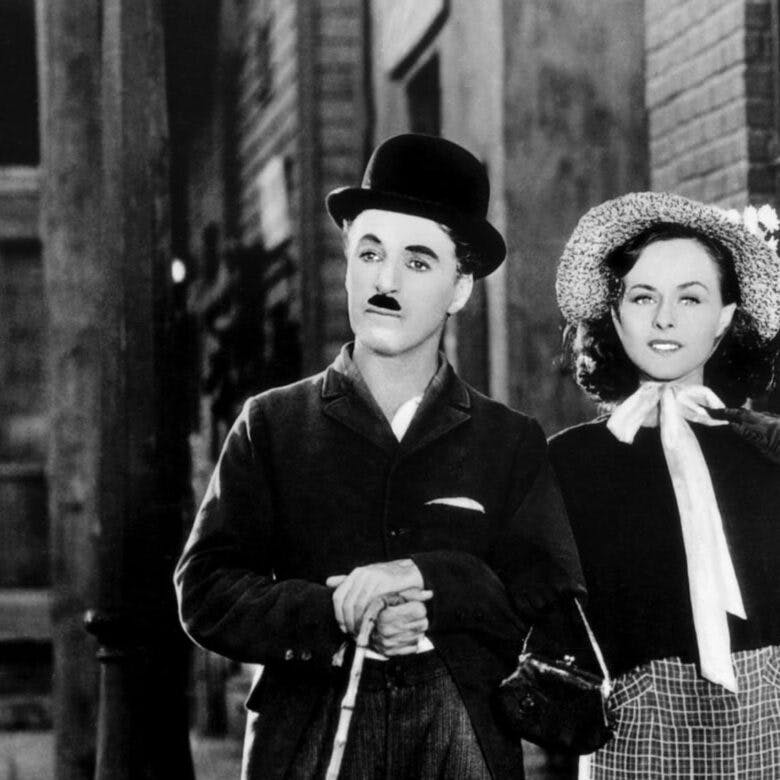Charlie Chaplin, The Kid, 1921
Use this primary source imagery to analyze major events in history.
Suggested Sequencing
- Use this Primary Source with the Charles Lindbergh and Flight Narrative to show how new mass media contributed to the spread of national culture and how national celebrities were able to emerge.
Introduction
In the nineteenth century, traveling shows and circuses entertained Americans. Troops of performers crisscrossed the nation regularly, bringing a variety of diversions such as singers, comedians, jugglers, dancers, animal acts, acrobats, and plays. As the technology of cameras, film, and projection progressed in the late nineteenth century, the “motion picture” was born, with the first silent film shown to a paying audience in Paris, France, in December 1895. “Silent films” were accompanied by live sound effects and in-house music, typically a piano or organ. Title cards occasionally interrupted a film’s ongoing action to provide brief bits of dialogue or to explain events. For a few cents, even those with little money to spare could escape via this new form of entertainment. As the popularity of motion pictures increased, film stars like Charlie Chaplin gained international fame. As the movie industry grew, its impact on culture did as well. Actors became more important as fans began to follow not only the careers of favorite performers like Chaplin but also their daily lives. Movie stars were part of the new star culture and mass consumerism as Americans idolized screen personalities.
The Kid (1921) was a silent film written, produced, and directed by Charlie Chaplin, and starring Chaplin in his iconic role as the Tramp. The Tramp was a well-meaning but bumbling character with a distinctive moustache, ill-fitting clothes, a bowler hat, and cane. As the Tramp, Chaplin was able to make audiences laugh and cry while sympathetically portraying the difficulties of the poor. In The Kid, the Tramp adopts an abandoned child(the Kid). When the Kid is older, he becomes the Tramp’s sidekick, breaking windows so his adopted father can find work repairing them. When the authorities learn the Tramp is not the Kid’s father, they attempt to take him away to an orphanage. Like The Kid, many of Chaplin’s films provided social commentary, most notably Modern Times (1936) and The Great Dictator (1940). Chaplin was presented with an honorary Oscar in 1972 for “the incalculable effect he has had in making motion pictures the art form of this [twentieth] century.”
Sourcing Questions
- What forms of entertainment were common in the United States in the nineteenth century?
- What three technologies were essential to create the “motion picture”?
- Who was Charlie Chaplin?
Watch this compilation of scenes from The Kid to see Charlie Chaplin in action.
Comprehension Questions
- Charlie Chaplin was known for slapstick comedy—physical comedy based on exaggerated actions and good timing. What elements of slapstick are present in these clips?
- Why would slapstick comedy lend itself to silent film?
- What elements of drama or pathos are present in these clips?
- What is the role of the title card?
Historical Reasoning Questions
- Explain why silent films might be popular with immigrant audiences.
- Chaplin himself was separated from his mother as a young child when she checked into a workhouse in England when she could not afford to pay rent (Chaplin was born in London but came to the United States as an actor at the age of 19 years). How has Chaplin commented on the social practice of separating children from their parents in these clips?
